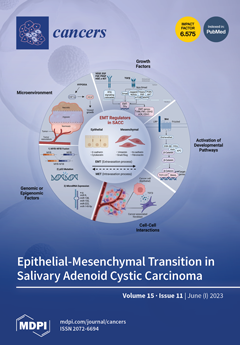Background: KRAS
G12C-mutated metastatic colorectal cancer (mCRC) has recently been recognized as a distinct druggable molecular entity; however, there are limited data on its sensitivity to standard chemotherapy. In the near future, the combination of chemotherapy plus a KRAS
G12C-inhibitor might become the standard of care; however, the optimal chemotherapy backbone is unknown. Methods: A multicentre retrospective analysis was conducted including KRAS
G12C-mutated mCRC patients treated with first-line FOLFIRI or FOLFOX +/− bevacizumab. Both unmatched and propensity-score-matched analysis (PSMA) were conducted, with PSMA controlling for: previous adjuvant chemotherapy, ECOG PS, use of bevacizumab in first line, timing of metastasis appearance, time from diagnosis to first-line start, number of metastatic sites, presence of mucinous component, gender, and age. Subgroup analyses were also performed to investigate subgroup treatment–effect interactions. KRAS
G12D-mutated patients were analysed as control. Results: One hundred and four patients treated with irinotecan-(N = 47) or oxaliplatin-based (N = 57) chemotherapy were included. In the unmatched population, objective response rate (ORR) and median (m) progression-free and overall survival (mPFS and mOS) were comparable between the treatment arms. However, a late (>12 months) PFS advantage was observed with irinotecan (HR 0.62,
p = 0.02). In the PSMA-derived cohort, a significant improvement with irinotecan vs. oxaliplatin was observed for both PFS and OS: 12- and 24-month PFS rates of 55% vs. 31% and 40% vs. 0% (HR 0.40,
p = 0.01) and mOS 37.9 vs. 21.7 months (HR 0.45,
p = 0.045), respectively. According to the subgroup analysis, interaction effects between the presence of lung metastases and treatment groups were found in terms of PFS (
p for interaction = 0.08) and OS (
p for interaction = 0.03), with a higher benefit from irinotecan in patients without lung metastases. No difference between treatment groups was observed in the KRAS
G12D-mutated cohort (N = 153). Conclusions: First-line irinotecan-based regimens provided better survival results in KRAS
G12C-mutated mCRC patients and should be preferred over oxaliplatin. These findings should also be considered when investigating chemotherapy plus targeted agent combinations.
Full article






